
How to Use TDS-sensor, voor waterkwaliteit: Examples, Pinouts, and Specs
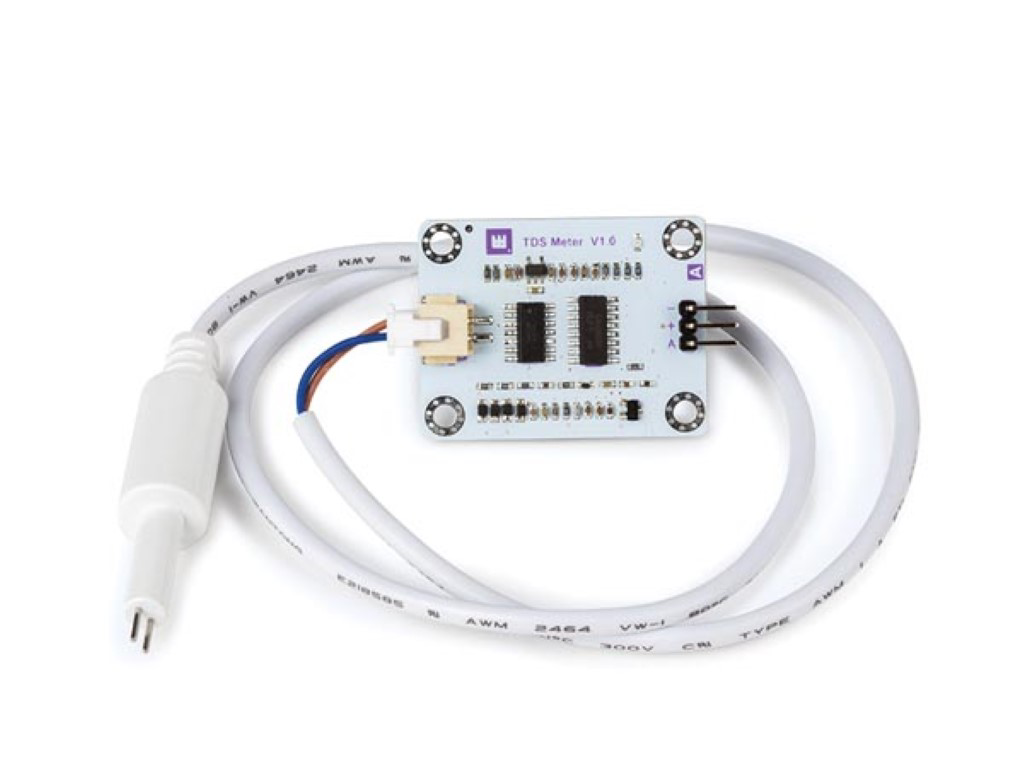
 Design with TDS-sensor, voor waterkwaliteit in Cirkit Designer
Design with TDS-sensor, voor waterkwaliteit in Cirkit DesignerIntroduction
The TDS (Total Dissolved Solids) Sensor WPM356 by Whadda is an electronic device designed to measure the total dissolved solids in water, which indicates the water quality. It is commonly used in water purification systems, aquariums, hydroponics, and environmental water testing.
Explore Projects Built with TDS-sensor, voor waterkwaliteit
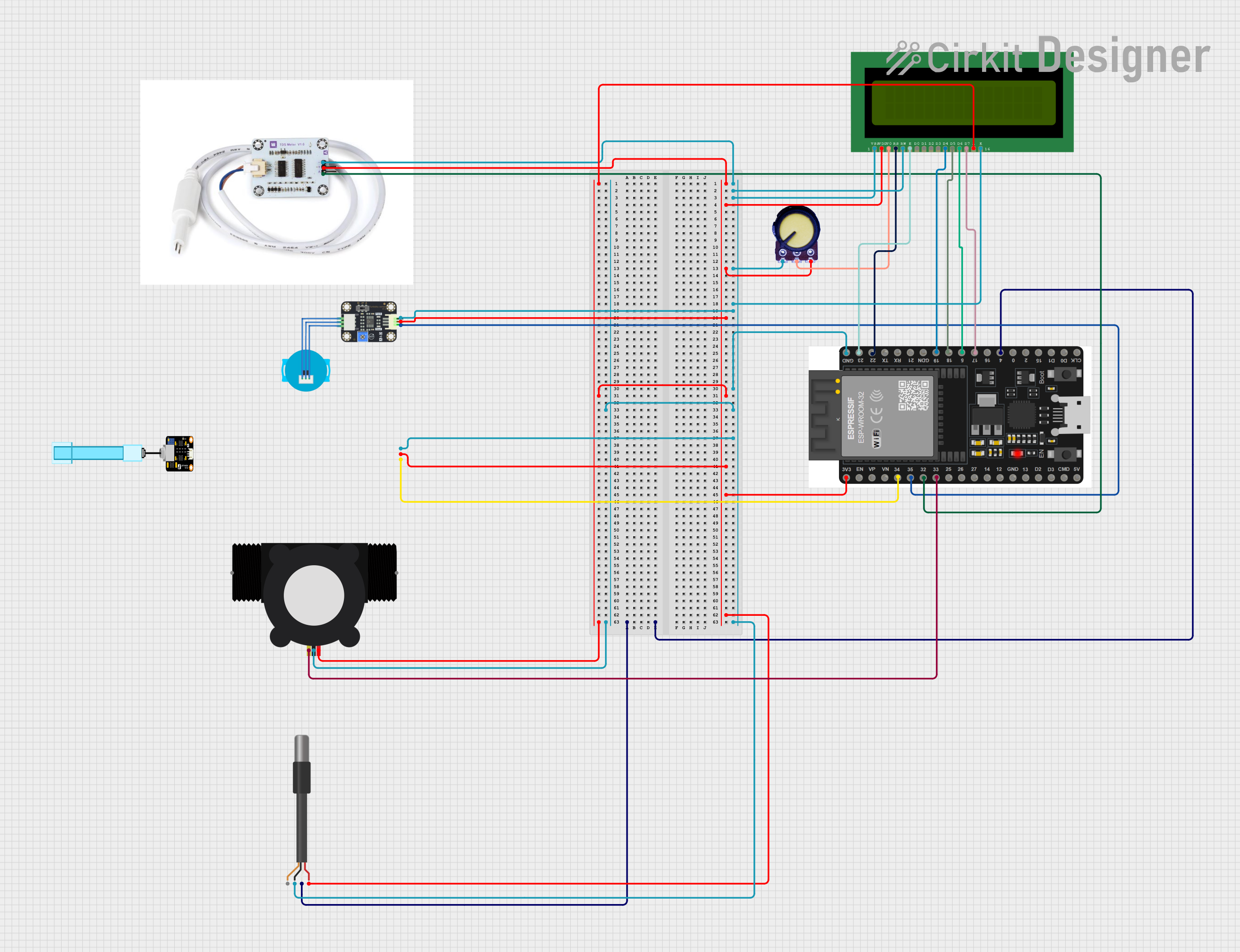
 Open Project in Cirkit Designer
Open Project in Cirkit Designer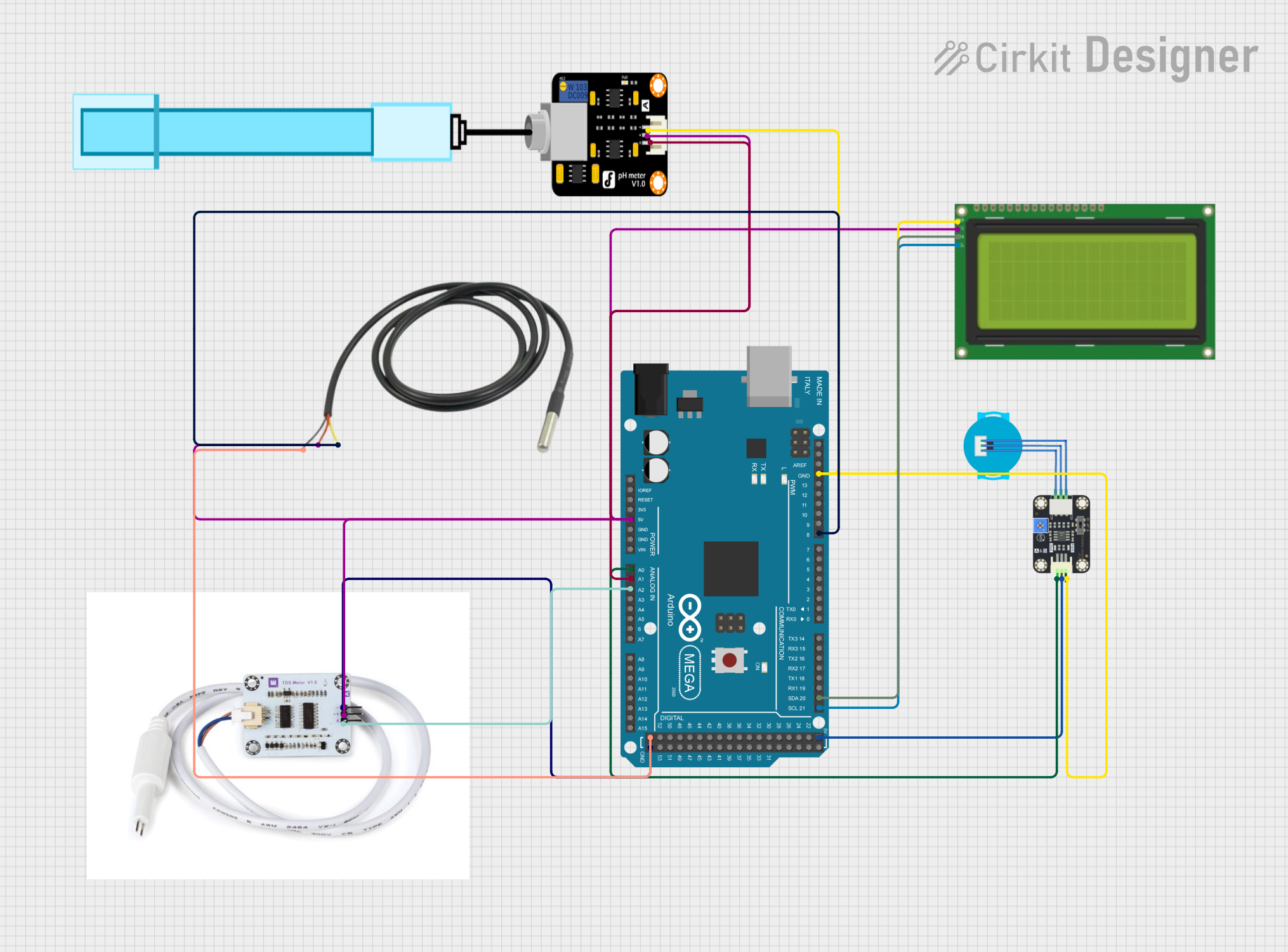
 Open Project in Cirkit Designer
Open Project in Cirkit Designer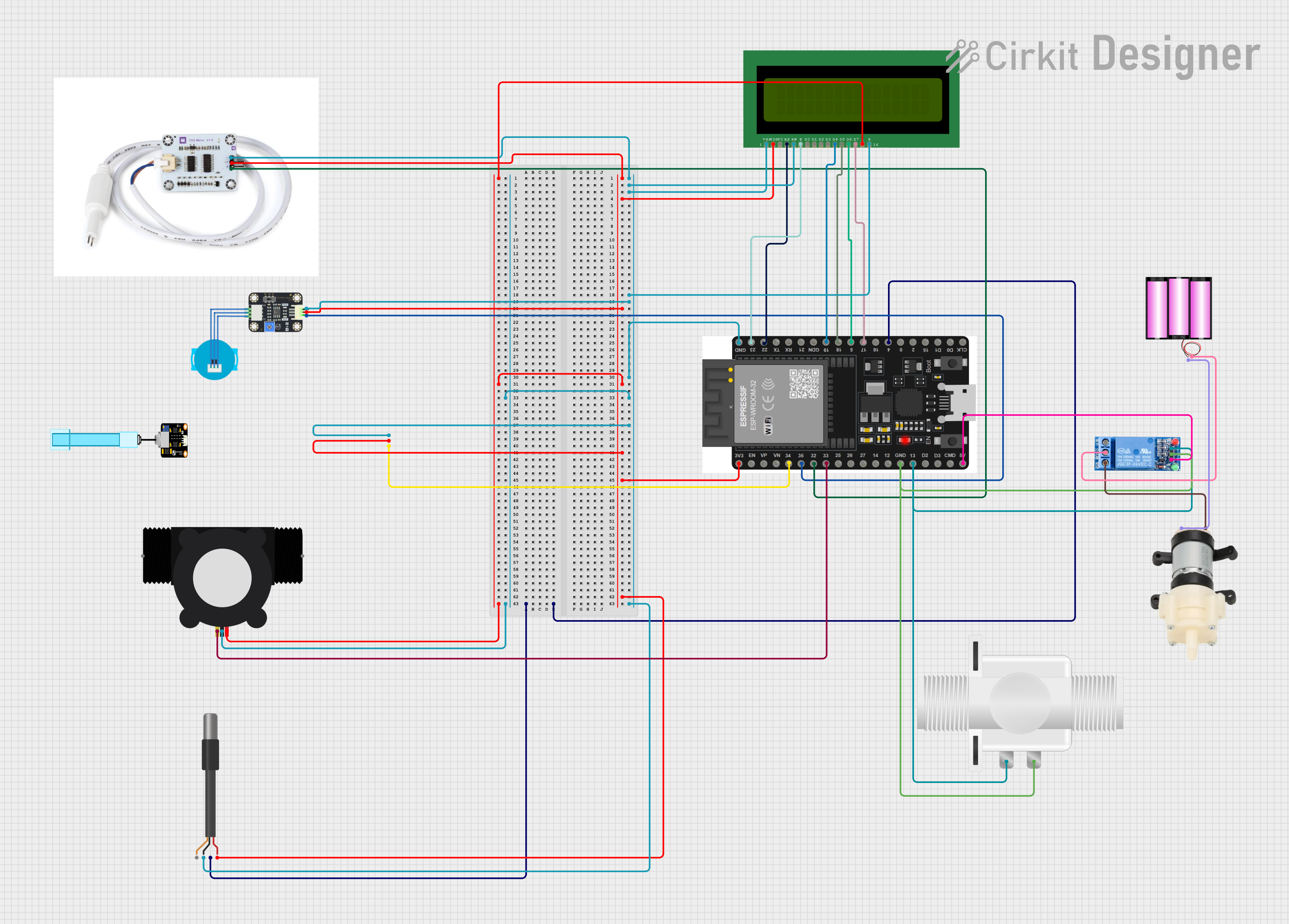
 Open Project in Cirkit Designer
Open Project in Cirkit Designer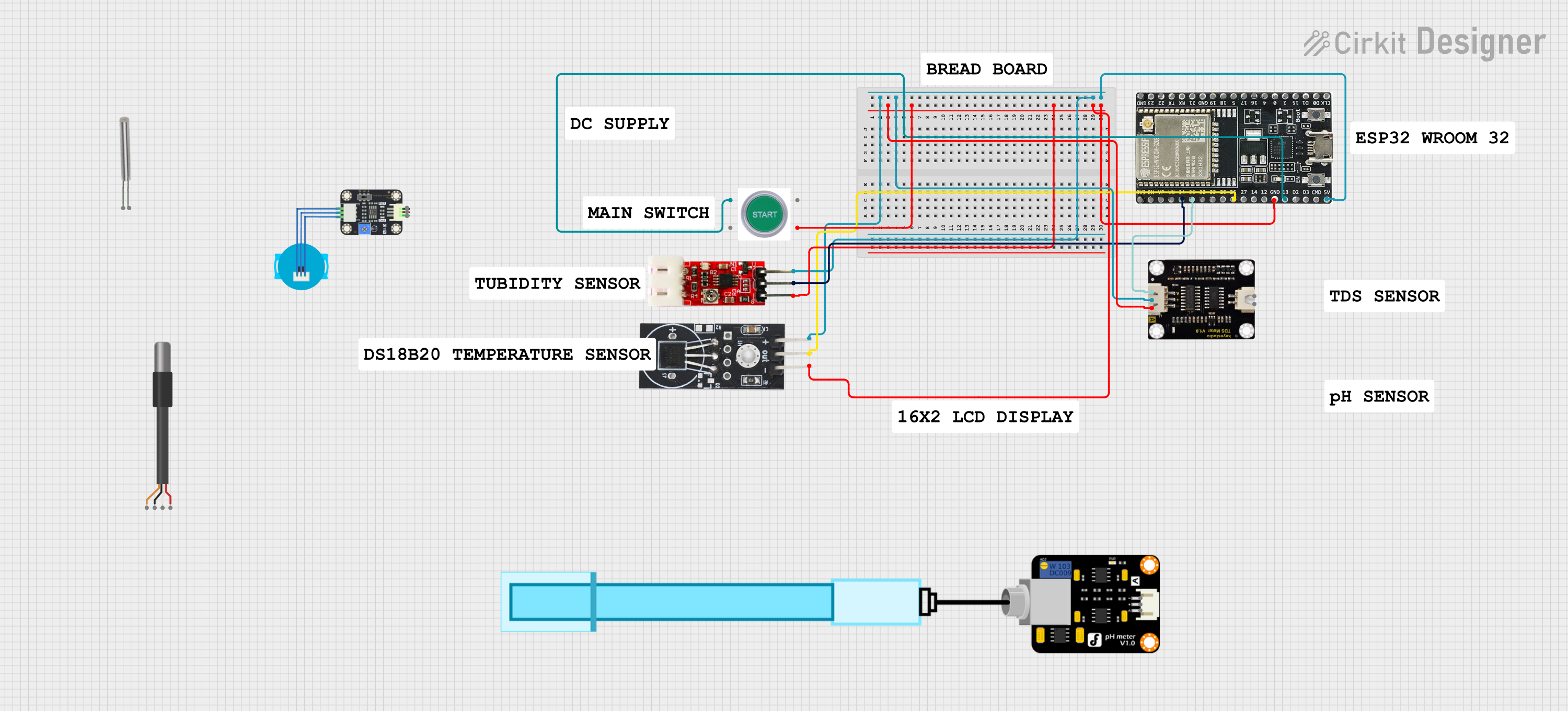
 Open Project in Cirkit Designer
Open Project in Cirkit DesignerExplore Projects Built with TDS-sensor, voor waterkwaliteit

 Open Project in Cirkit Designer
Open Project in Cirkit Designer
 Open Project in Cirkit Designer
Open Project in Cirkit Designer
 Open Project in Cirkit Designer
Open Project in Cirkit Designer
 Open Project in Cirkit Designer
Open Project in Cirkit DesignerCommon Applications and Use Cases
- Water quality monitoring for drinking water
- Aquariums and aquaculture
- Hydroponic farming and nutrient solutions
- Environmental water testing and analysis
Technical Specifications
Key Technical Details
- Operating Voltage: 3.3V to 5.5V
- Output Voltage: 0V to 2.3V
- Measurement Range: 0 to 1000ppm
- Accuracy: ±10% F.S. (Full Scale)
- Operating Temperature: 0°C to 50°C
Pin Configuration and Descriptions
| Pin Number | Name | Description |
|---|---|---|
| 1 | VCC | Power supply (3.3V to 5.5V) |
| 2 | GND | Ground connection |
| 3 | AOUT | Analog output voltage |
| 4 | TEMP | Temperature sensor output (optional) |
Usage Instructions
How to Use the Component in a Circuit
- Connect the VCC pin to a 3.3V or 5V power supply.
- Connect the GND pin to the ground of the power supply.
- Connect the AOUT pin to an analog input on your microcontroller (e.g., Arduino UNO).
- (Optional) Connect the TEMP pin to another analog input if temperature compensation is needed.
Important Considerations and Best Practices
- Ensure the sensor is calibrated before use for accurate measurements.
- Avoid submerging the sensor beyond the indicated "water level" line.
- Use a pull-down resistor if necessary to stabilize the output signal.
- Keep the sensor clean and free from oil and other contaminants.
Example Code for Arduino UNO
// TDS Sensor Reading for Arduino UNO
const int TdsSensorPin = A0; // Analog input pin that the sensor is attached to
const float Vref = 5.0; // Analog reference voltage(Volt) of the ADC
const float SCOUNT = 30; // Number of samples for calibration
float analogBuffer[SCOUNT]; // Store the analog samples
int analogBufferTemp[SCOUNT];
int analogBufferIndex = 0, copyIndex = 0;
void setup() {
Serial.begin(9600);
pinMode(TdsSensorPin, INPUT);
}
void loop() {
static unsigned long analogSampleTimepoint = millis();
if (millis() - analogSampleTimepoint > 40U) { // Every 40 milliseconds, collect a sample
analogSampleTimepoint = millis();
analogBuffer[analogBufferIndex] = analogRead(TdsSensorPin); // Read the analog value
analogBufferIndex++;
if (analogBufferIndex == SCOUNT) {
analogBufferIndex = 0;
}
}
static unsigned long printTimepoint = millis();
if (millis() - printTimepoint > 800U) {
printTimepoint = millis();
for (copyIndex = 0; copyIndex < SCOUNT; copyIndex++) {
analogBufferTemp[copyIndex] = analogBuffer[copyIndex];
}
float averageVoltage = getMedianNum(analogBufferTemp, SCOUNT) * (float)Vref / 1024.0; // Convert analog reading to voltage
float tdsValue = (133.42 * averageVoltage * averageVoltage * averageVoltage - 255.86 * averageVoltage * averageVoltage + 857.39 * averageVoltage) * 0.5; // Convert voltage to TDS value
Serial.print("TDS Value = ");
Serial.print(tdsValue, 0);
Serial.println(" ppm");
}
}
int getMedianNum(int bArray[], int iFilterLen) {
int bTab[iFilterLen];
for (byte i = 0; i < iFilterLen; i++) {
bTab[i] = bArray[i];
}
int i, j, bTemp;
for (j = 0; j < iFilterLen - 1; j++) {
for (i = 0; i < iFilterLen - j - 1; i++) {
if (bTab[i] > bTab[i + 1]) {
bTemp = bTab[i];
bTab[i] = bTab[i + 1];
bTab[i + 1] = bTemp;
}
}
}
if ((iFilterLen & 1) > 0) {
bTemp = bTab[(iFilterLen - 1) / 2];
} else {
bTemp = (bTab[iFilterLen / 2] + bTab[iFilterLen / 2 - 1]) / 2;
}
return bTemp;
}
Troubleshooting and FAQs
Common Issues Users Might Face
- Inaccurate Readings: Ensure the sensor is properly calibrated and the water sample is not contaminated.
- No Output Signal: Check the power supply and connections to the sensor. Ensure the sensor is not damaged.
- Fluctuating Readings: Stabilize the sensor's output with a pull-down resistor and ensure a clean, stable power supply.
Solutions and Tips for Troubleshooting
- Calibration: Perform a calibration using a known TDS solution to ensure accuracy.
- Cleaning: Regularly clean the sensor electrodes with distilled water to prevent residue buildup.
- Temperature Compensation: If the TEMP pin is used, implement temperature compensation in the code to adjust for temperature variations affecting TDS readings.
FAQs
Q: Can the sensor be used in saltwater? A: Yes, but the measurement range and calibration may differ from freshwater applications.
Q: How often should the sensor be calibrated? A: Calibration frequency depends on usage, but typically once every month or after any maintenance.
Q: Is the sensor waterproof? A: The sensor is water-resistant up to the indicated water level line, but the entire sensor should not be submerged.
Q: What is the lifespan of the sensor? A: With proper maintenance and use, the sensor can last several years, but it may need to be replaced if the readings become consistently inaccurate or erratic.